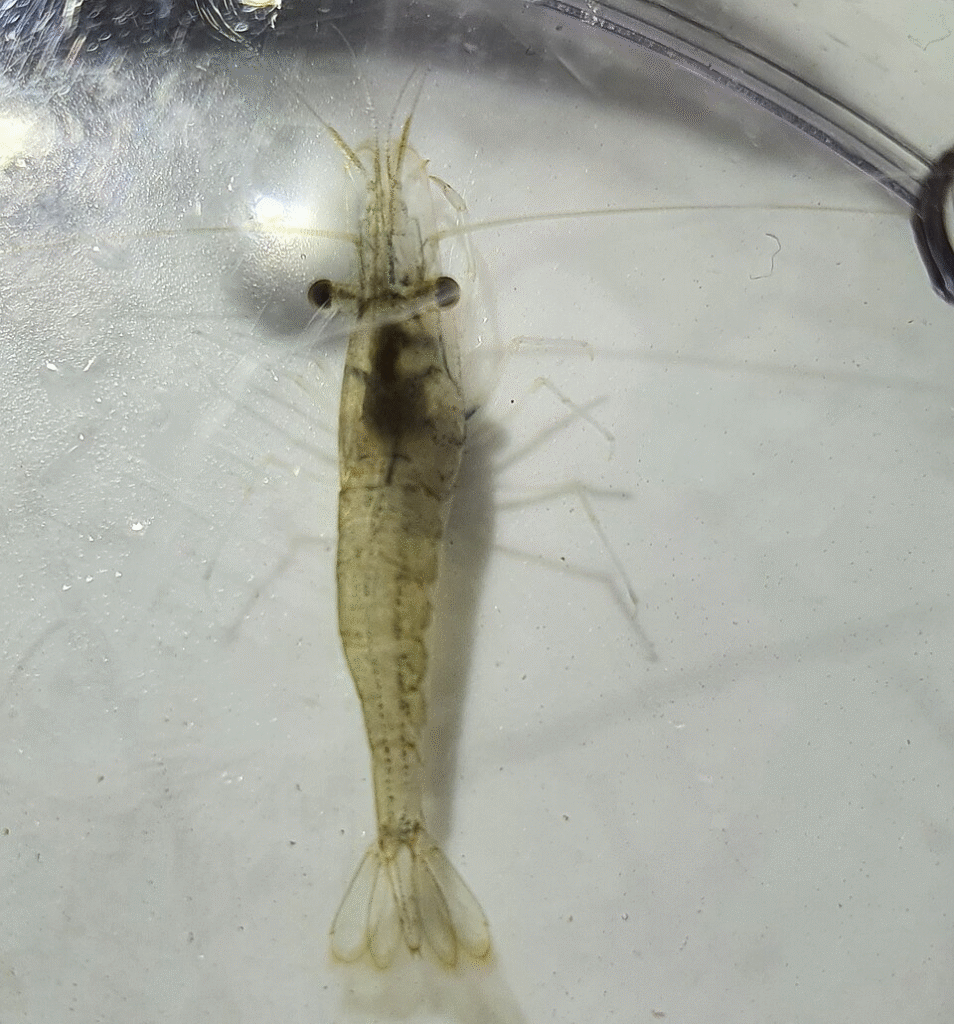Caridea (Small or medium size shrimps)
Infraorder of Pleocyemata
Food, Animal source foods, Arthropods (Arthropoda), Crustaceans (Crustacea), Decapods (Decapoda), Pleocyemata
Consumption area(s): Earth

Introduction
Caridea belong to a specific infraorder within the broader Decapoda group. This classification includes every recognized species considered a true small or medium size shrimp, distinguishing them from other crustaceans with similar appearances. These shrimps are distributed globally, inhabiting both marine and freshwater environments. Their adaptability allows them to thrive in a wide range of ecosystems, from coastal shallows to deep-sea regions and inland rivers.
Despite sharing common names or physical traits, many creatures that resemble them—such as mud shrimp from the group Axiidea or boxer shrimp from Stenopodidea—are not true members of this infraorder. Over time, these unrelated species have developed comparable anatomical features through convergent evolution, giving them a superficial similarity to the genuine shrimps.
The difference beetwenn shrimps and prawns
The words shrimp and prawn are everyday expressions rather than scientific designations. They don’t correspond to any precise taxonomic category, and their use is mainly practical. In other words, these are convenient culinary or colloquial terms that don’t carry any formal biological meaning. Using them is perfectly acceptable, as long as one avoids confusing them with the names of zoological classifications.
As explained by crustacean specialist Tin-Yam Chan, neither term is linked to a clearly defined scientific group. While “shrimp” often refers to smaller species and “prawn” to larger ones, this distinction isn’t fixed. In many places the two are even reversed or used interchangeably. Similarly, the zoologist L. B. Holthuis observed decades ago that in the United States, larger commercial species tend to be called shrimp, whereas in most Commonwealth countries, they’re generally known as prawns—though numerous exceptions exist.
The confusion increases because the word shrimp is closely tied to the idea of small size. Many species are indeed tiny—around 2 cm long—but some can grow beyond 25 cm, like Penaeus monodon. This explains the seemingly paradoxical expression “jumbo shrimp,” which feels contradictory in English but not in markets where the same animals are sold as “jumbo prawns.” Commercially, the larger varieties are often labeled as prawns, particularly across the Commonwealth of Nations, even when they’re biologically similar to shrimp.
In this blog, to keep things clear and consistent for both US and UK readers, we’ll use only the word shrimp. We’ll distinguish them by size: small and medium shrimp will refer to members of the Caridea, while large or jumbo shrimp will correspond to the Dendrobranchiata.
Description of Caridea
Caridea inhabit a wide range of aquatic environments, with the majority thriving in marine waters. About 25% of described species occur in freshwater. Some of these species are economically valuable, and they are distributed across every continent except Antarctica. Marine Caridea are found at depths up to 5,000 meters, spanning tropical to polar regions.
These creatures show enormous diversity in form. Some species measure just a few millimeters when fully grown, while others reach over 30 centimeters in length. Most Caridea possess a single pair of stalked eyes, which may sometimes be covered by the carapace, a protective shell encasing the cephalothorax and surrounding the gills. Water passes through the gills thanks to movements of the mouthparts.
In terms of feeding, most Caridea are omnivorous, though some have specialized diets. Certain species act as filter feeders, using setose legs to sieve particles from the water, while others graze algae from rocks. These animals, in turn, are prey for various fish and seabirds. Depending on the species and habitat, they reach lengths from 1.2 to 30 centimeters and have a lifespan ranging from 1 to 6.5 years.
Reproduction and development in these animals differ from Dendrobranchiata. They brood their eggs rather than releasing them freely into the water. All naupliar stages occur within the egg, which hatches as a zoea that feeds on plankton. The number of zoea stages can range from two to thirteen. The post-zoeal organism, or decapodid, resembles a miniature adult but retains some larval traits. After its final metamorphosis, it becomes a post-larval juvenile, fully formed but still young. Most adult Caridea are benthic, living primarily on the sea floor.
Shrimps as food
Shrimp are rich in protein yet low in caloric value, much like most seafood. A meal centered on shrimp provides a notable amount of cholesterol, ranging roughly between 122 and 251 mg per 100 g, depending on how it is prepared. Despite this, shrimp are often regarded as beneficial for cardiovascular health. Their minimal saturated fat content means that, paradoxically, the high cholesterol they contain can actually enhance the LDL-to-HDL ratio and reduce triglyceride levels, supporting a healthier circulatory system.

There are countless ways to cook shrimp, making them one of the most versatile seafoods and they can be grilled, boiled, baked, sautéed, fried, and burgers. In Asian cuisines, particularly across South and Southeast Asia, shrimp are a key ingredient in numerous dishes. They appear in shrimp curries, soups, and noodle-based meals, often serving as a flavor base or umami enhancer. In Japanese cuisine, shrimp hold a special place in sushi culture, known as the “king of sushi-dane.” Served either raw or cooked, shrimp sushi is often considered an ideal introduction for those new to the world of sushi, especially for those hesitant to try raw fish.
Across North America, fried shrimp is a popular comfort food, featured in dishes like jambalaya in the southern United States. In South America and the Caribbean, shrimp enrich recipes such as enchiladas and coconut shrimp, blending local spices with seafood traditions. Additionally, in many parts of Asia, shrimp are fermented to create shrimp paste—a strongly aromatic condiment essential to various regional cuisines in China and Southeast Asia.
Classification of Caridea
This infraorder is divided into superfamilies, among which we find:
- Alpheoidea (pistol shrimps/snapping shrimps)
- Crangonoidea (common shrimps/brown shrimps/bay shrimps/sand shrimps)
- Palaemonoidea (palaemon shrimps)
- Pandaloidea (pandalid shrimps)
Nutritional facts table of Caridea
Since nutritional values can vary slightly depending on the species, the figures provided below represent general averages.
| Nutrients | Per 100 g |
| Calories (kcal) | 99 |
| Total fat (g) | 0.6 |
| ———Saturated fat (g) | 0.1 |
| Cholesterol (mg) | 189 |
| Sodium (mg) | 224 |
| Total carbohydrates (g) | 0.3 |
| ———Dietary fiber (g) | 0 |
| ———Total sugar (g) | 0 |
| Protein (g) | 24 |
Recipes that use this product as an ingredient:
Source(s):
https://en.wikipedia.org/wiki/Caridea
Photo(s):
1. KenYoGro, CC BY-SA 4.0 https://creativecommons.org/licenses/by-sa/4.0, via Wikimedia Commons
2. Biso, CC BY-SA 4.0 https://creativecommons.org/licenses/by-sa/4.0, via Wikimedia Commons

